Po-Hsuan Chen
Shared Representational Geometry Across Neural Networks
Nov 28, 2018

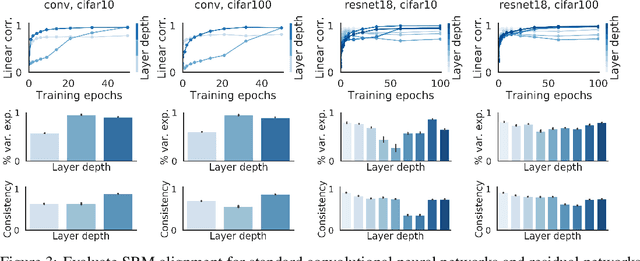
Abstract:Different neural networks trained on the same dataset often learn similar input-output mappings with very different weights. Is there some correspondence between these neural network solutions? For linear networks, it has been shown that different instances of the same network architecture encode the same representational similarity matrix, and their neural activity patterns are connected by orthogonal transformations. However, it is unclear if this holds for non-linear networks. Using a shared response model, we show that different neural networks encode the same input examples as different orthogonal transformations of an underlying shared representation. We test this claim using both standard convolutional neural networks and residual networks on CIFAR10 and CIFAR100.
Mapping Between fMRI Responses to Movies and their Natural Language Annotations
Apr 10, 2017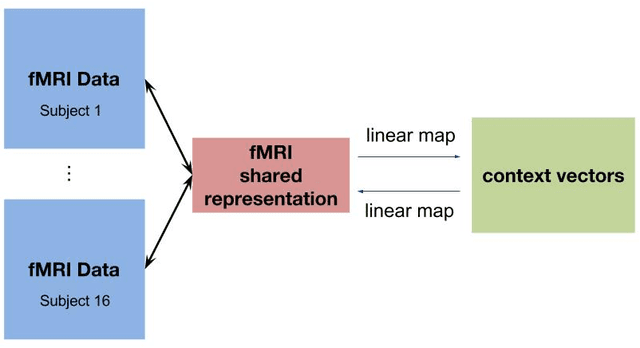
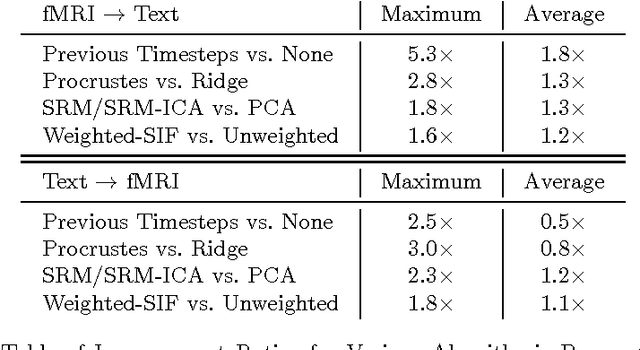
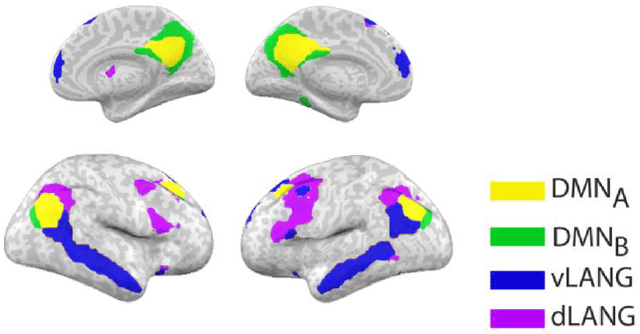

Abstract:Several research groups have shown how to correlate fMRI responses to the meanings of presented stimuli. This paper presents new methods for doing so when only a natural language annotation is available as the description of the stimulus. We study fMRI data gathered from subjects watching an episode of BBCs Sherlock [1], and learn bidirectional mappings between fMRI responses and natural language representations. We show how to leverage data from multiple subjects watching the same movie to improve the accuracy of the mappings, allowing us to succeed at a scene classification task with 72% accuracy (random guessing would give 4%) and at a scene ranking task with average rank in the top 4% (random guessing would give 50%). The key ingredients are (a) the use of the Shared Response Model (SRM) and its variant SRM-ICA [2, 3] to aggregate fMRI data from multiple subjects, both of which are shown to be superior to standard PCA in producing low-dimensional representations for the tasks in this paper; (b) a sentence embedding technique adapted from the natural language processing (NLP) literature [4] that produces semantic vector representation of the annotations; (c) using previous timestep information in the featurization of the predictor data.
A Searchlight Factor Model Approach for Locating Shared Information in Multi-Subject fMRI Analysis
Sep 29, 2016
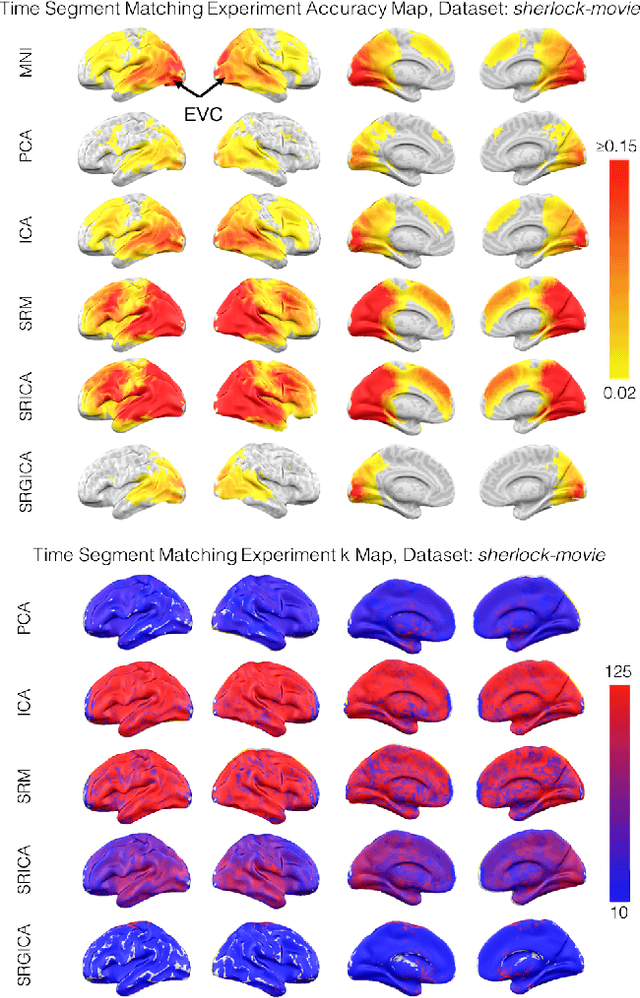
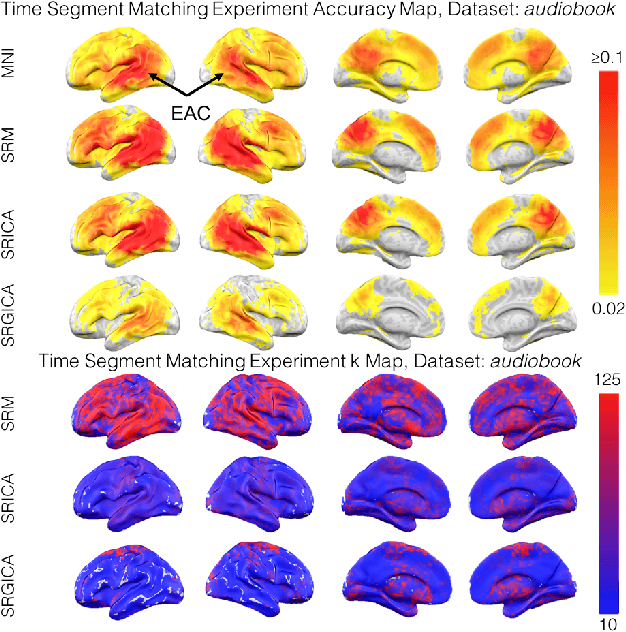
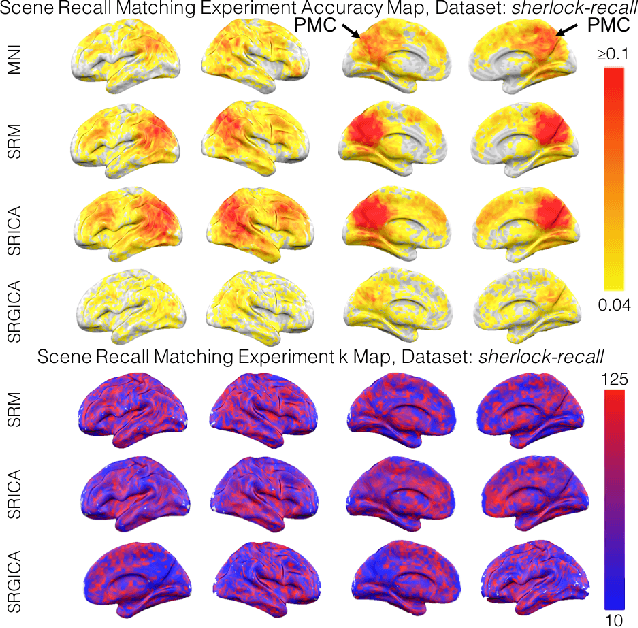
Abstract:There is a growing interest in joint multi-subject fMRI analysis. The challenge of such analysis comes from inherent anatomical and functional variability across subjects. One approach to resolving this is a shared response factor model. This assumes a shared and time synchronized stimulus across subjects. Such a model can often identify shared information, but it may not be able to pinpoint with high resolution the spatial location of this information. In this work, we examine a searchlight based shared response model to identify shared information in small contiguous regions (searchlights) across the whole brain. Validation using classification tasks demonstrates that we can pinpoint informative local regions.
Enabling Factor Analysis on Thousand-Subject Neuroimaging Datasets
Aug 18, 2016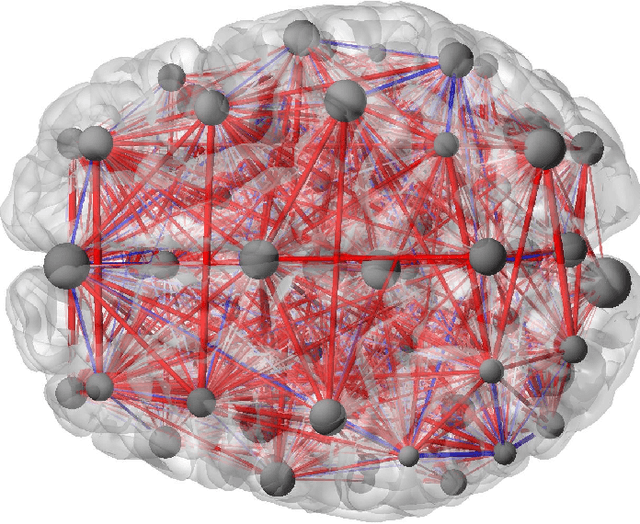
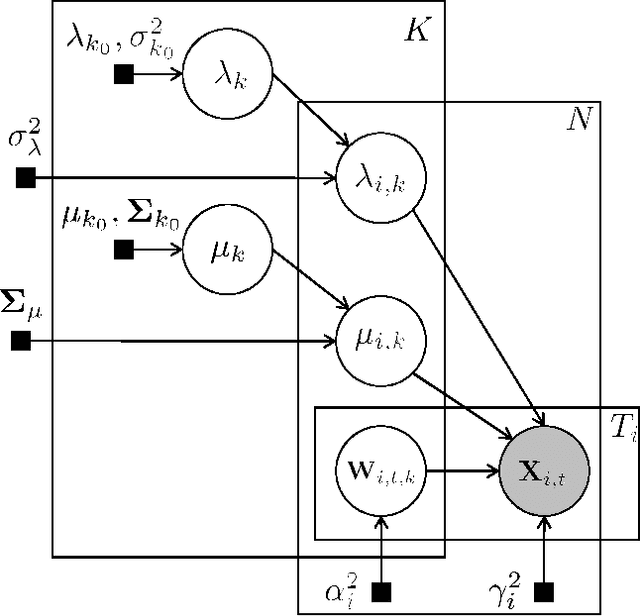

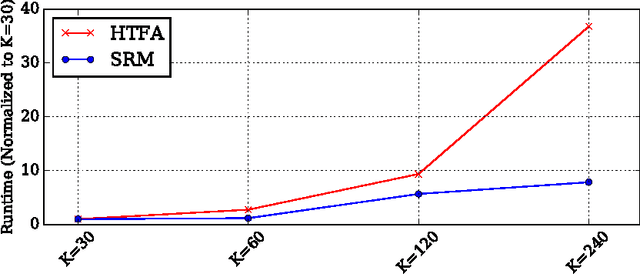
Abstract:The scale of functional magnetic resonance image data is rapidly increasing as large multi-subject datasets are becoming widely available and high-resolution scanners are adopted. The inherent low-dimensionality of the information in this data has led neuroscientists to consider factor analysis methods to extract and analyze the underlying brain activity. In this work, we consider two recent multi-subject factor analysis methods: the Shared Response Model and Hierarchical Topographic Factor Analysis. We perform analytical, algorithmic, and code optimization to enable multi-node parallel implementations to scale. Single-node improvements result in 99x and 1812x speedups on these two methods, and enables the processing of larger datasets. Our distributed implementations show strong scaling of 3.3x and 5.5x respectively with 20 nodes on real datasets. We also demonstrate weak scaling on a synthetic dataset with 1024 subjects, on up to 1024 nodes and 32,768 cores.
A Convolutional Autoencoder for Multi-Subject fMRI Data Aggregation
Aug 17, 2016
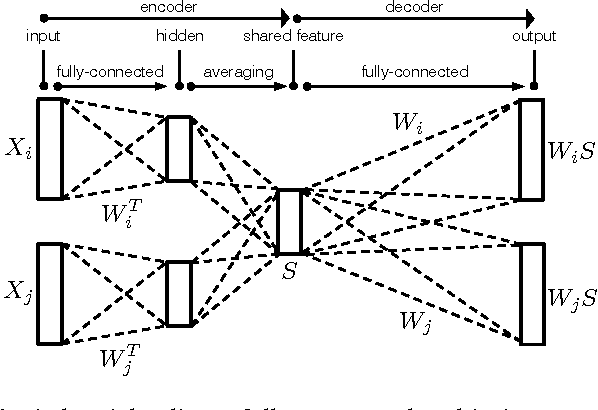
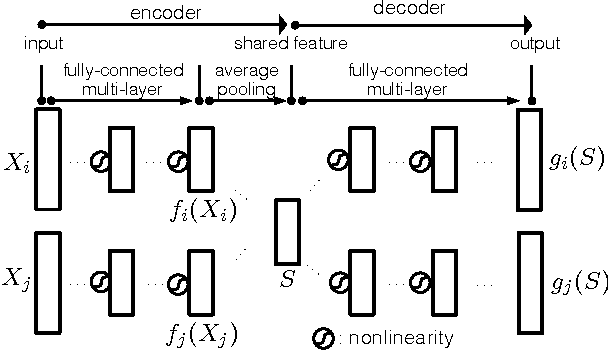

Abstract:Finding the most effective way to aggregate multi-subject fMRI data is a long-standing and challenging problem. It is of increasing interest in contemporary fMRI studies of human cognition due to the scarcity of data per subject and the variability of brain anatomy and functional response across subjects. Recent work on latent factor models shows promising results in this task but this approach does not preserve spatial locality in the brain. We examine two ways to combine the ideas of a factor model and a searchlight based analysis to aggregate multi-subject fMRI data while preserving spatial locality. We first do this directly by combining a recent factor method known as a shared response model with searchlight analysis. Then we design a multi-view convolutional autoencoder for the same task. Both approaches preserve spatial locality and have competitive or better performance compared with standard searchlight analysis and the shared response model applied across the whole brain. We also report a system design to handle the computational challenge of training the convolutional autoencoder.
 Add to Chrome
Add to Chrome Add to Firefox
Add to Firefox Add to Edge
Add to Edge